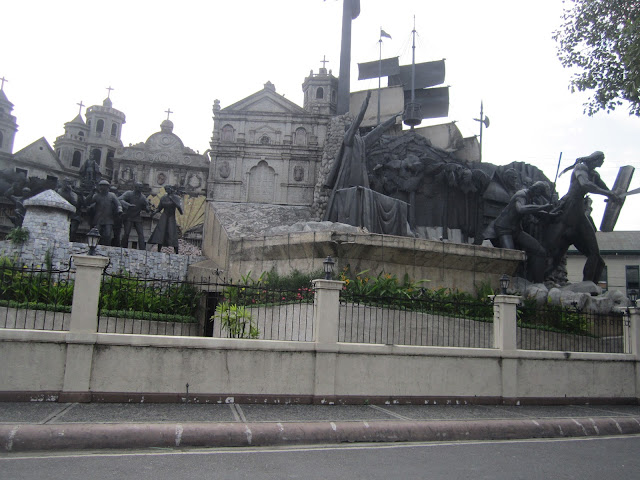The P2-million project, which was funded by the Department of Tourism
(DOT), is a sculptural tableau that encapsulates Cebu ’s history through
renowned historical figures such as Rajah Humabon, Jose Rizal and Pedro
Calungsod. Conceptualized by multi-awarded sculptor Eduardo Castrillo, the mammoth structure depicts significant moments in Cebu’s history beginning with that fateful fight of April 21, 1521 in the island of Mactan where native chieftain Lapu-Lapu killed Portuguese explorer Ferdinand Magellan.
The monument was purposely situated in Parian to highlight the area’s important role in the country’s history. Parian, which is near Colon St. , the oldest street in the Philippines, was the old Chinese district of Cebu. It was a bustling community where the locals, the Chinese and Spanish mestizos engaged in commerce and trade. Some of Cebu ’s prominent names such as Osmeñas, Avilas, Uy-Herreras and Cuencos trace their roots to Parian, which was once an enclave of wealthy families.
The monument was purposely situated in Parian to highlight the area’s important role in the country’s history. Parian, which is near Colon St. , the oldest street in the Philippines, was the old Chinese district of Cebu. It was a bustling community where the locals, the Chinese and Spanish mestizos engaged in commerce and trade. Some of Cebu ’s prominent names such as Osmeñas, Avilas, Uy-Herreras and Cuencos trace their roots to Parian, which was once an enclave of wealthy families.







0 comments:
Post a Comment